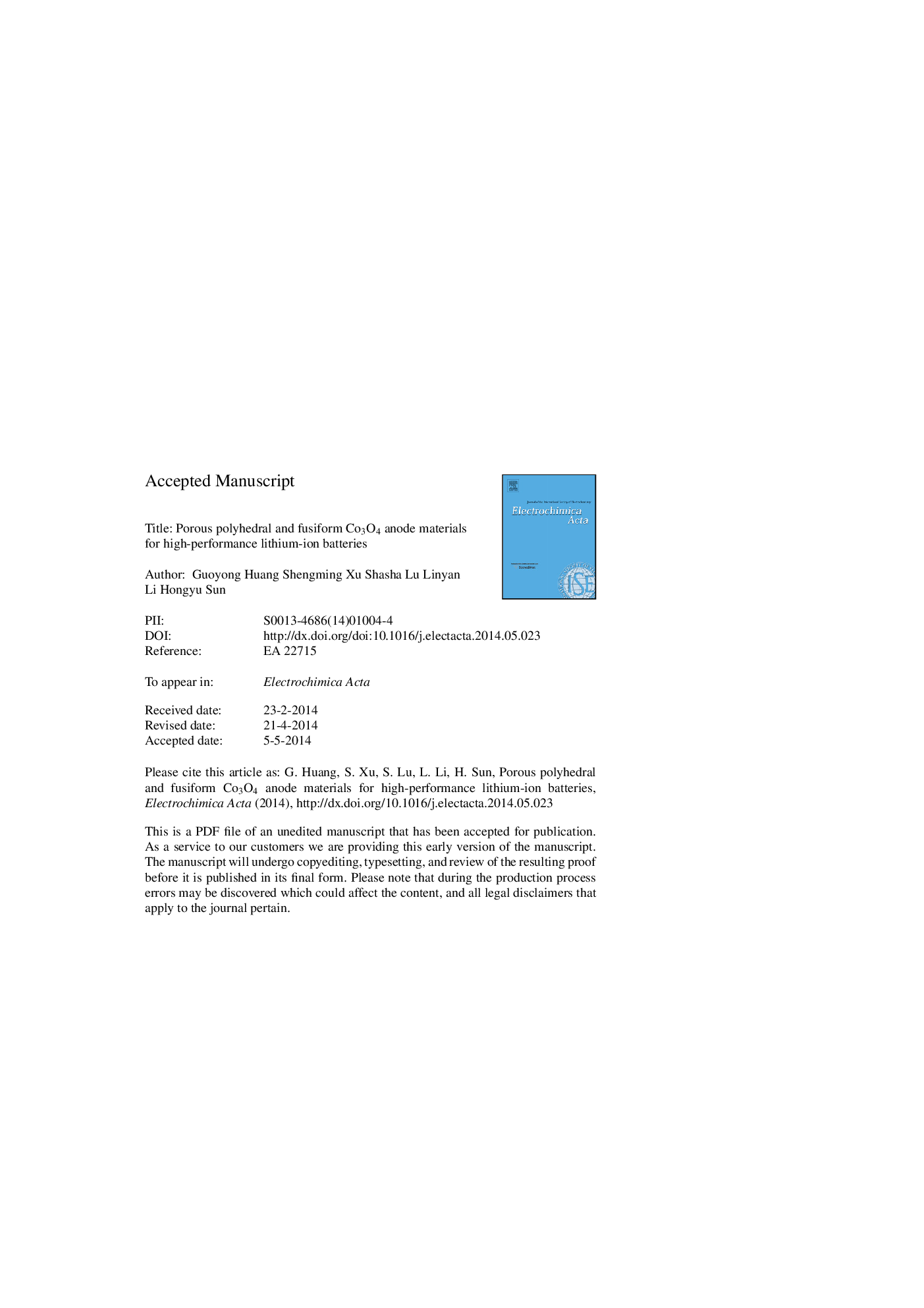| Article ID | Journal | Published Year | Pages | File Type |
|---|---|---|---|---|
| 6613606 | Electrochimica Acta | 2014 | 24 Pages |
Abstract
Co3O4 is commonly used as a potential anode material for Li-ion batteries (LIBs). In this study, novel porous polyhedral and fusiform Co3O4 powders have been synthesized successfully through the hydrothermal method with different solvents followed by thermal treatment. It is shown that both of the polyhedrons (1.0-3.0 μm in side length) and the spindles (2.0-5.0 μm in length, 0.5-2.0 μm in width) are composed of similar irregular nanoparticles (20-200 nm in diameter, 20-40 nm in thickness) bonded to each other. Evaluated by electrochemical measurements, both of them have high initial discharge capacities (1374.4 mAhgâ1 and 1326.3 mAhgâ1) and enhanced cycling stabilities at the low rate (the capacity retention ratios at 0.1 C after 70 cycles are 91.6% and 92.2%, respectively). However, the rate capability of the spindles (93.8%, 90.1% and 98.9% of the second discharge capacities after 70 cycles at 0.5 C, 1 C and 2 C, respectively) is better than the polyhedrons' (only 76.2%, 42.1% and 59.3% under the same conditions). Remarkable, the unique morphologies and special structures may be extended to synthesize other similar transition metal oxides (NiO, Fe3O4, et al.) as high performance anodes for LIBs.
Related Topics
Physical Sciences and Engineering
Chemical Engineering
Chemical Engineering (General)
Authors
Guoyong Huang, Shengming Xu, Shasha Lu, Linyan Li, Hongyu Sun,
